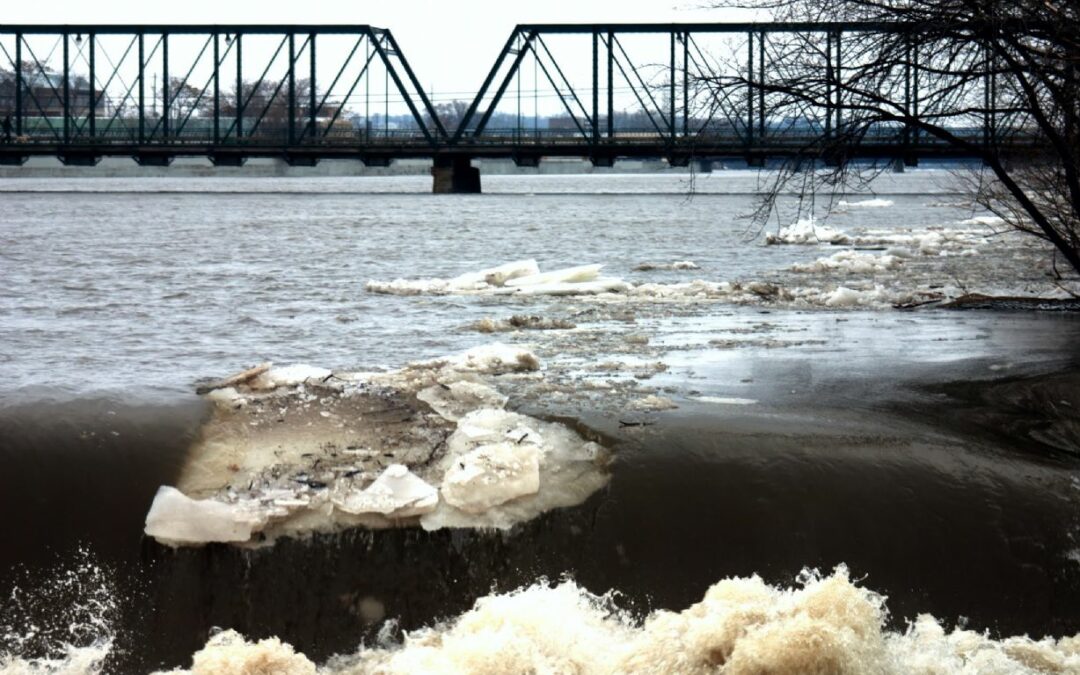Winter – the season when the weather becomes colder, the holidays are upon us, and children look forward to snow days. It’s the most wonderful time of the year. One thing you might not associate with winter is flooding. However, nearly 20 percent of the most major flooding events between 2008-2018 happened during the winter months. The 2019-2020 winter forecast is predicting even higher precipitation levels for many areas of the United States.
What Causes Winter Flooding?
As the Snow Melts
Many different conditions can cause winter flooding. One common cause is snowmelt. The natural water cycle in mountainous areas includes snowmelt as a contributing part of the water movement. In fact, 75 percent of all water sources in some states is from melted snow. When the snow melts too rapidly or sooner than expected it causes runoff. In the winter, the ground is typically frozen and unable to absorb water as it normally would. The water has no option but to continue flowing and flooding occurs.
Ice, Ice, Baby
Another result of freezing temperatures that can cause trouble is ice. The surface layer of water can freeze during long spells of low temperatures. When temperatures rise, the ice breaks apart into large chunks and follows the natural water flow. The pieces of ice become jammed in natural and human-made obstructions on the waterways, such as bridges and narrow rock paths. The water is no longer able to pass through these pathways due to the ice jams, which can result in flooding. The USACE has an ice jam database that monitors all current events.
Windy Winter Storms
Like hurricanes, winter storms bring heavy winds. These winds can reach up to 60 miles per hour and create a storm surge for coastal and river areas. In March 2018, the northeast had record flooding when Winter Storm Riley brought wind gusts of 93 miles per hour and up to 15 feet of storm surge to coastal cities. This storm created nearly $3 billion in damage.
How to Prepare for Winter Flooding
Mitigation
- Make sure all drainage areas surrounding your building are free of debris, allowing water flows through and away from the structure.
- Check the walls and foundation of your basement, and use a waterproof sealant or caulk to fill in any cracks.
- Install a sump pump. If your property doesn’t already have one, consider investing in a sump pump. These can quickly remove water from your basement, protecting it from water damage.
- Remove snow from around the foundation of your building.
Evacuation and Safety
- Have an evacuation plan ready. If you are leaving, shut off water and gas to your home.
- Unplug all electronics and make sure cords are not touching the ground to reduce the risk of electrocution.
- Prepare a safety kit for emergencies. Your kit should include batteries, flashlights, first-aid necessities, food, blankets, and water.
- Take photos of your home. This will assist with any insurance claims, should you have damage.
- Never attempt to clean up flood water without protective clothing.
Know Your Flood Risk
The best way to protect yourseld and your property from flooding is through awareness and education. My Flood Risk is free to use and offers a comprehensive, more accurate understanding of your true flood risk. Our flood experts are available to answer any questions you may have regarding flood risk, flood insurance, and flood preparation. Don’t wait until it’s too late. Know your risk and protect your property.


